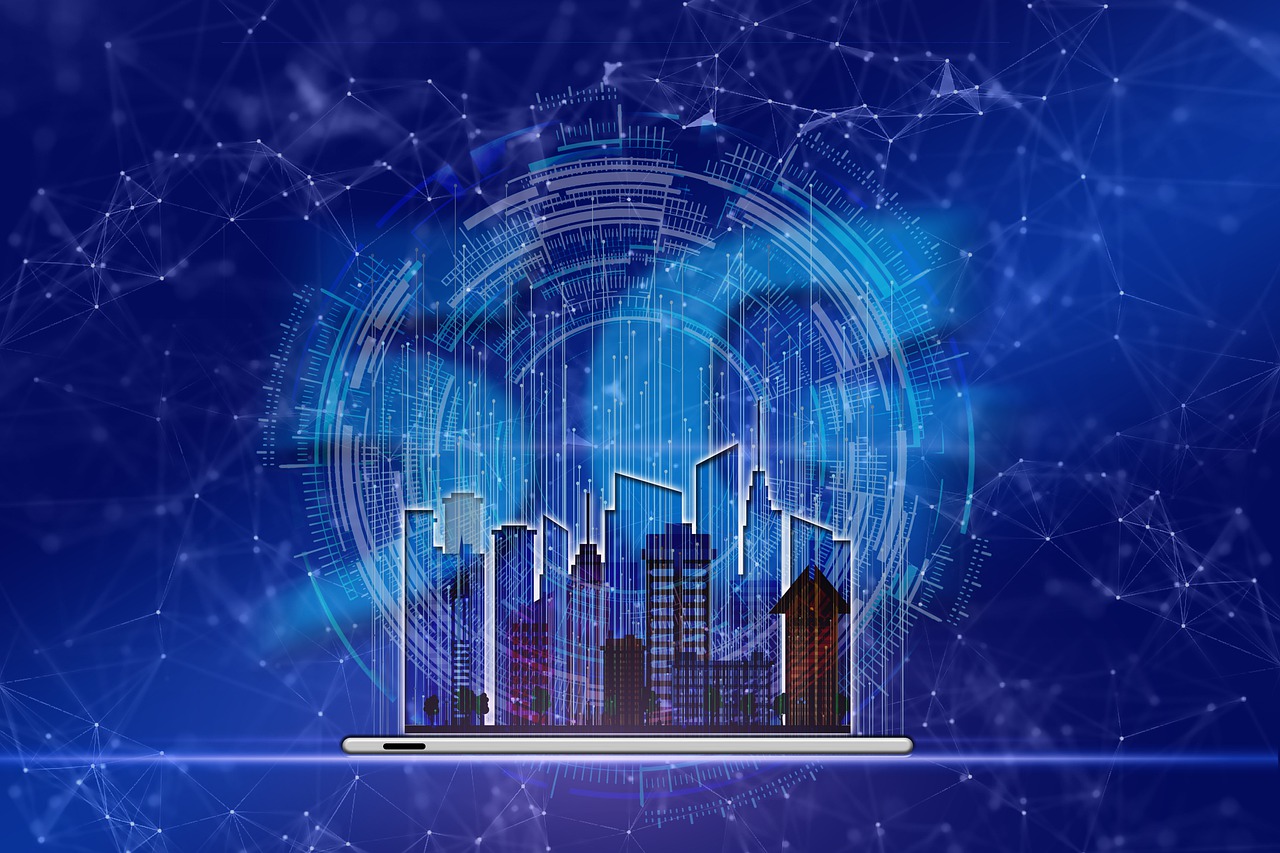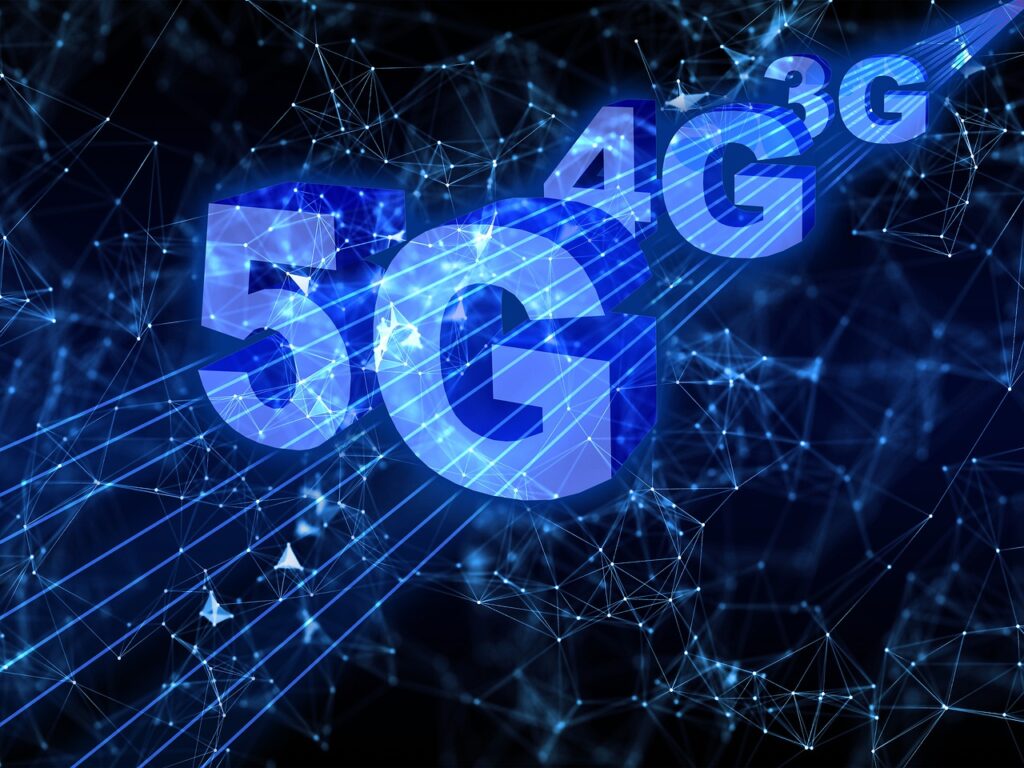The Impact of 5g on everyday life
- Better entertainment: 5G will reduce latency and buffering so consumers can enjoy immersive gaming, stream high-quality videos, and access virtual and augmented reality content.

- Smart cities: 5G will enable the communication and coordination of smart sensors, actuators, vehicles, and infrastructure that can optimize traffic, energy, security, and environmental management.
- Better healthcare: 5G will support telemedicine, remote surgery, wearable technology, and health monitoring systems that can improve access, quality, and efficiency of healthcare services.
- Creative industries: 5G will make it possible to develop new products, services, and business models that make use of cloud computing, big data, artificial intelligence, and the Internet of Things.
These are just a few instances of how 5G can alter our day-to-day activities. 5G does, however, come with certain risks and problems, including those related to cost, coverage, security, and environmental effects. As a result, it’s critical to weigh the advantages and disadvantages of this technology and guarantee it is morally and responsibly applied.
How Does 5G Work?

5G is the fifth generation of wireless technology, utilizing higher radio frequencies for faster information transmission. It utilizes a wide range of wireless spectrum, multiple input and output antennae, smaller transmitters, and network slicing to enhance performance, reliability, and flexibility. It supports applications like telemedicine, augmented reality, smart cities, and autonomous vehicles.
What is the difference between 5G and 4G?

5G, the fifth generation of wireless technology, differs from 4G, the fourth generation of wireless technology, in that 5G provides faster and more dependable internet connections. Among the principal variations are:
- Speed: While 4G can only give data speeds of up to 1 Gbps, 5G can deliver speeds of up to 2.5 Gbps.
- Latency: The latency of 4G is approximately 50 ms, but that of 5G is only 1 ms12. The time it takes for data to move from one place to another is known as latency.
- Coverage: 5G outperforms 4G in terms of capacity and coverage thanks to the use of higher frequency radio waves and more base stations, albeit availability may be restricted in some areas.
- Applications: Compared to 4G, 5G allows more sophisticated use cases and applications, including virtual and augmented reality, remote surgery, smart cities, and the Internet of Things.
Although 5G is predicted to completely transform how we engage with technology and communicate, there are certain dangers and concerns associated with it, including those related to cost, security, and the environment. As a result, it’s critical to use technology properly and to be aware of its advantages and disadvantages.
Is it safe to use 5G?
However, more studies are needed to monitor the long-term effects and address emerging issues or uncertainties. It is important to be informed and use 5G responsibly.
How can I get 5G on my phone?
To get 5G on your phone, you need to have a 5G compatible device, a 5G SIM card, and a 5G network coverage in your area. Depending on your phone model and your telecom operator, you may also need to enable some settings to activate 5G on your phone. Here are some general steps to check and enable 5G on your phone:
- Check if your phone supports 5G by looking at its specifications online or in the settings app.
- Check if your SIM card supports 5G by contacting your telecom operator or visiting their website. You may need to upgrade your SIM card if it is not 5G ready.

- Check if your location has 5G network coverage by using a 5G coverage map or app provided by your telecom operator or a third-party service.
- Enable 5G on your phone by going to the settings app and selecting the preferred network type as 5G. You may also need to enable some other options such as 5G auto or 5G on, depending on your phone and operator.
For more specific instructions on how to get 5G on your phone, you can refer to these web search results:
- How to Check & Enable 5G Support in Your Phone? – Airtel
- Airtel 5G launched: how to activate 5G network on your smartphone
- Enable APN Settings for 5G SIM Card – Airtel
I hope this helps you get 5G on your phone.
How Secure is 5g technology?
Due to a number of security features and improvements, 5G technology is intended to be more secure than earlier generations of wireless networks. These features and improvements include: • User traffic integrity protection, which guards against data manipulation or modification while it’s in transit.
- Enhanced subscriber privacy, which shields users’ location and identity from would-be prying eyes.
- Subscriber identity hiding, which guards against users’ permanent identities being discovered or monitored.
- Payload and roaming interface security, which authenticates and encrypts communications between several network carriers.
- Key interface encryption and mutual authentication, which guarantee that only authorised users can access network resources and services.
However, 5G technology also brings with it new security dangers and difficulties, like:
- An increased attack surface, which exposes more connections, devices, and data to possible attackers.
- Network slicing, which calls for the appropriate management and isolation of various network portions and services.
- Cloud-based infrastructure, which depends on platforms and services from outside the company for security.
- Open RAN, which enhances the network’s complexity and risk while enabling interoperability and flexibility among its constituent parts.
Which country have 5G coverage?
5G is the fifth generation of wireless technology, offering faster and more reliable internet connections. However, coverage is not available in all countries or regions, and may vary depending on network operator and device. Some countries with 5G coverage as of 2024 include:
- China: China has the most 5G cities in the world, with 376 cities covered by 5G networks.

- United States: The US has the second most 5G cities in the world, with 284 cities covered by 5G networks. The US also has the highest 5G availability among the countries on this list, with 49.2% of mobile connections on 5G networks.
- South Korea: South Korea was one of the first countries to launch 5G services in 2019, and it has 43.8% of mobile
connections on 5G networks. South Korea also has the second fastest median 5G download speed in the world, at 507.59 Mbps. - United Arab Emirates: The UAE has the fastest median 5G download speed in the world, at 592.01 Mbps. The UAE also has 34.8% of mobile connections on 5G networks.
- Netherlands: The Netherlands has the second highest 5G availability among the countries on this list, with 45.1% of mobile connections on 5G networks.
- Kuwait: Kuwait has 35.5% of mobile connections on 5G networks3, and a median 5G download speed of 333.67 Mbps.
- Qatar: Qatar has 34.8% of mobile connections on 5G networks3, and a median 5G download speed of 325.23 Mbps.
- Malaysia: Malaysia has a median 5G download speed of 415.62 Mbps5, and 10.6% of mobile connections on 5G networks.
- Brazil: Brazil has a median 5G download speed of 388.87 Mbps5, and 9.9% of mobile connections on 5G networks.
- Dominican Republic: The Dominican Republic has a median 5G download speed of 386.02 Mbps5, and 9.7% of mobile connections on 5G networks.
5G coverage in various countries is expanding rapidly, with more countries and regions expected to join the list in the future. The 5G coverage map2 provides the latest updates on global 5G availability.`
Is there any country that has banned 5G?
5G is the fifth generation of wireless technology, offering faster and more reliable internet connections, but faces opposition and controversy from countries banning or restricting its use due to security, health, or political reasons.
The web search results reveal several countries that have banned or limited 5G services.
- Australia: Australia has blocked Huawei and ZTE from providing equipment for its 5G network, citing national security concerns.
- Brazil: Brazil has excluded Huawei from its 5G auction, following pressure from the United States.
- Czech Republic: The Czech Republic has issued a warning against using Huawei and ZTE equipment for 5G networks, claiming they pose a security risk.
- India: India has banned Huawei and ZTE from participating in its 5G trials, amid rising tensions with China.
- Italy: Italy has imposed strict regulations on Huawei and ZTE for 5G networks, requiring them to undergo security checks and obtain government approval.
- United Kingdom: The UK has decided to phase out Huawei from its 5G network by 2027, after initially allowing it with some restrictions.
- United States: The US has banned Huawei and ZTE from supplying equipment for its 5G network, and has urged its allies to do the same
These are the countries that have banned or limited 5G technology, but its evolution and expansion may lead to more countries changing their stance in the future.
Read our blog “Future Of EVs In India” by clicking here
Pingback: Future of Electric Vehicles In India - 2024